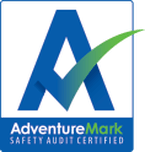Are my risk assessments accurate?
So you assess the risks involved in your activities and come up with a nice, neat score on your risk register. Does your assessment consider the chances of something happening in isolation, or do you think about how severe an incident could be if it happened in combination with something else?
For example: if I slip and break my ankle at home making dinner, I can crawl to my phone and call an ambulance. I’ll probably be in hospital within an hour. Now, what if I’m solo guiding and I slip and break my ankle in a canyon at 4pm on a windy, cloudy day. I don’t have cell signal but I’ve activated my PLB. Hs the signal gone to the Rescue Coordination Centre yet? Is a helicopter going to fly in this weather? How long will a rescue team take on foot? Will they have the gear and training to get me out the canyon? What about my participants? We can see that the risk of a broken ankle can be significantly different, depending on where and when it happens, although the injury is the same.
Has this happened before? Not just to you or your operation, but in the wider industry. Do we know of people suffering anaphylaxis is remote areas? Did they carry EpiPens? Was one enough to control the reaction before emergency help arrived or should we consider additional adrenalin?
Have people encountered rapidly rising rivers from rain or dams opening unexpectedly? How did they respond and was their response adequate?
Hindsight is demonised as a way of making somebody's decision look wrong, but what if we can use hindsight to our advantage? Sure, we would do things differently, in hindsight. So let’s review these incidents and use them to check our own risk assessments and incident and emergency response plans.

